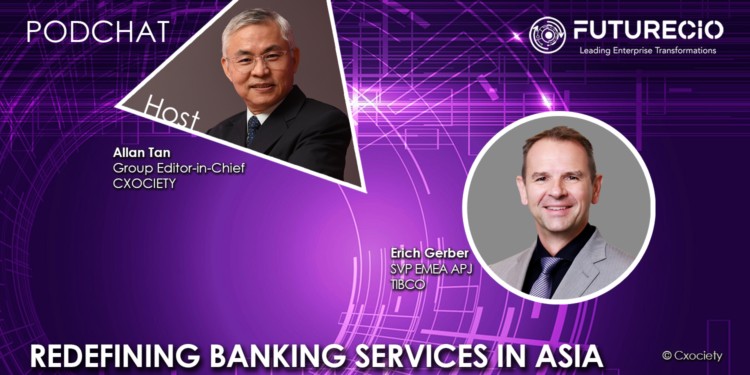Fulfilling the mandate to be data-driven, the CIO challenge?
It’s been a year since the COVID-19 pandemic hit the ASEAN banking industry. Like most businesses, remote working has become the norm for many in the banking industry. Like some other industries, the ASEAN’s banking sector has had to scramble to modernise infrastructure and operations to allow for a larger percentage of its banking services to be offered through digital channels.
However, much remains to improve the efficiencies as legacy systems and processes remain tied to the old ways of working. Many banks, for example, cannot just abandon decades of applications, systems, frameworks and processes, without unnecessarily raising risks to banks and customers.
According to the World Retail Banking Report 2021, sponsored by Capgemini and Efma, “42% of bank executives polled said that they were not sure how to integrate and streamline mid-, back- and front-office functions effectively, and 46% said they are unsure how to embrace open banking, orchestrate the ecosystem or become a truly data-driven organization.”
The modernisation trap
The challenge of modernising decades-old systems and processes continues to straddle CIOs around the region.
Erich Gerber, SVP EMEA APJ, TIBCO, says financial institutions want to be creating a much better customer experience because that is what they have to do with the digital natives being used to much better examples than what they traditionally see with these banks.
“But on the other hand, they also have to ensure that these digital experiences are not just lipstick on a pig. You have to tie all of these front-ends that you make look very, very sexy, to the back-end systems, to the processes that have been established for decades. That is where the problem lies for all of these CIOs – they cannot just get rid of these legacy systems in an easy way,” he opined.
The data conundrum
Gerber is quick to acknowledge that today’s CIO has a lot more going for him (or her) compared to a decade ago – at least when it comes to data integration.
He explained that in addition to the usual data sources within the company, there is also the data generated by the company’s ecosystem of partners and suppliers, as well as its customers. He noted that specific to the banking industry, local Fintech communities has grown spurred by regulator’s endorsement of open banking.
Finally, there is social media.
“It is all about capturing the data generating resources and making sure that you get access to them in real-time. Compared to a decade ago, there is more mature technologies to enable CIOs to access all of these data sources in real-time,” commented Gerber.
He stressed the importance of being able to do so if a bank wants to be able to understand the ecosystem it operates in. He cautioned, however, that access to data is only one part of the process. The other half is taking action when the data calls for it – and this could be pre-emptively as when the data shows some trends occurring.
The challenge of shorter technology cycles
An observable trend is the shortening product lifecycles across many industries. According to ResearchAndMarkets.com between the period 2000 to 2019, average product lifecycle has shortened by 50%, while product complexity has increased by three-fold. The trend is not limited to the products and services being rolled out but the technologies being used to assist in the development and management of these offerings.
For the CIO these shortening cycles across the technology ecosystem he or she is responsible for presents challenges and risks as much as opportunities to innovate. One approach being adopted by IT is modular thinking or compartmentalised IT strategies.
“You have to cut your architecture into smaller pieces so that when one of the pieces needs replacement, you are not affecting the whole system as such. This is what you can see across the board, not only in banks, that every CIO is working on that principle,” observed Gerber.
Data-driven will continue
In the ebook, The Future of Decisions, Gartner analysts say leadership needs to conceive data-driven business opportunities and orchestrate enterprise action.
To which, Gerber adds: “data will remain at the core of every organisation’s activity.”
He says driving this pursuit of data is customer experience. He adds that organisations that have a business to consumer business model will have to ensure that their consumers are loyal, and that they are more loyal than, the click that they need to get on to their competition and do business with them.
Click on the PodChat player and listen to Gerber share insights into how CIOs of the region’s financial services industry are fulfilling the drive to create a data-driven business culture.
- How would you characterise the ASEAN banking environment in 2021?
- What has changed from the perspective of how the CIO operates?
- The term ‘Data is the new currency’ since been around since the early 2010s. What is different about how leadership viewed data today from a decade ago?
- How would you tie this ‘data is the new currency to the ‘data-driven ambitions of financial institutions in 2021?
- What are the challenges facing the CIO and IT team in realising these data-driven ambitions?
- Given that technology cycles are shortening, regulations also fluid, how does a CIO architect the organisations IT strategy so that when changes need to happen, the disruption can be minimised?
- Given what we read about as increased desire to be more data-driven (on the part of leadership), to what extent is the CIO making this a reality at financial institutions in ASEAN?
- Today it’s about being “data-driven”. What will likely follow in the near term?
- What questions should I ask my vendor to help me better harness data-driven initiative?





